Milk is regarded a complete food because it contains protein, fat, carbohydrates, vitamins and minerals (Agudelo and Bedoya, 2005; Claeys et al., 2014; De Silva et al., 2016) which benefit the health of the consumer (Yuen et al., 2012). According to Tafur and Nieto (2011), Battaglini et al. (2013) and Cerón-Muñoz et al. (2015), milk production requires animal management, sanitary and nutritional practices that guarantee a safe product (Young et al., 2010) through the application of good management practices (GMP). Tafur and Nieto (2011) defined GMP as a tool to monitor routinely activities involved in dairy production, while Young et al. (2010) defined them as a collection of management and biosecurity measures to prevent the risk of milk contamination with chemicals or physical elements or infection of animals by microorganisms. According to Londoño et al. (2016), GMP are those practices directed to the continuous improvement of processes in a livestock system, aimed at promoting business management while ensuring a safe product.
Colombian decree No. 616/2006 regulates milk production in the country by ordering a series of measures to standardize the hygiene and sanitary parameters of raw milk (MPS, 2006). In chapter 63 the need to create a system that supervises and certifies the safety of raw milk is exposed, this is how GMP arose. It also grants power to the Colombian Agricultural Institute (ICA) to carry out the inspection, evaluation and official certification of dairy farms, officializing GMP application (ICA, 2008). Decree 0017/2012 (MADR, 2012) and amendments 0077 (MADR, 2015) and 468 (MADR, 2015) establish the payment methodology to the farmer and define GMP as the payment criterion.
The application and compliance of GMP implies that milk producers have to invest time and money in the certification process. In return, they expect satisfactory results for applying GMP. Satisfaction is defined as compliance with requirement, or as being content and in accordance with what is done. Veenhoven (1996) goes beyond the cognitive definition by stating that a satisfied individual is one who enjoys life; while Maslow (1943) argued that satisfaction is achieved by solving specific needs.
The study of satisfaction has been approached by Herzberg, who proposed the theory of factors, indicating that satisfaction depends on the fulfillment of all the factors involved in the work environment (Pinto, 2002). David McClelland presented the theory of learned needs, which defines the attitudes of an individual with respect to their state of satisfaction (Perilla, 1998). Maslow (1943) proposed the theory of pyramidal hierarchy of human needs in which the most basic needs are on the basis, while security, appreciation and esteem needs are above and self-realization at the apex.
The objective of this study was to measure the degree of satisfaction of dairy farmers with certification in good management practices.
MATERIALS AND METHODS
The survey was applied to GMP-certified dairy farm owners in northern Antioquia (municipalities: Bello, San Pedro de los Milagros, Entrerríos, Don Matías, Santa Rosa de Osos, San José de la Montaña, Belmira and Yarumal).
The Likert-scale questionnaire was written considering the hierarchy of needs theory (Maslow, 1943). The dimensions considered the achievements reached by producers when they got the GMP certificate, responding to the needs of security, esteem and self-realization (8 variables, Table 1). The second dimension measured the level of satisfaction with the changes obtained (9 variables, Table 1). The third dimension evaluated how easy the certification requirements were (5 variables, Table 1). Finally, the general satisfaction variable was expressed within the statistical analysis as "pleased".
Table 1 Variables used to represent achievement, satisfaction with the changes, and ease of certification among GMP-certified milk producers in northern Antioquia.
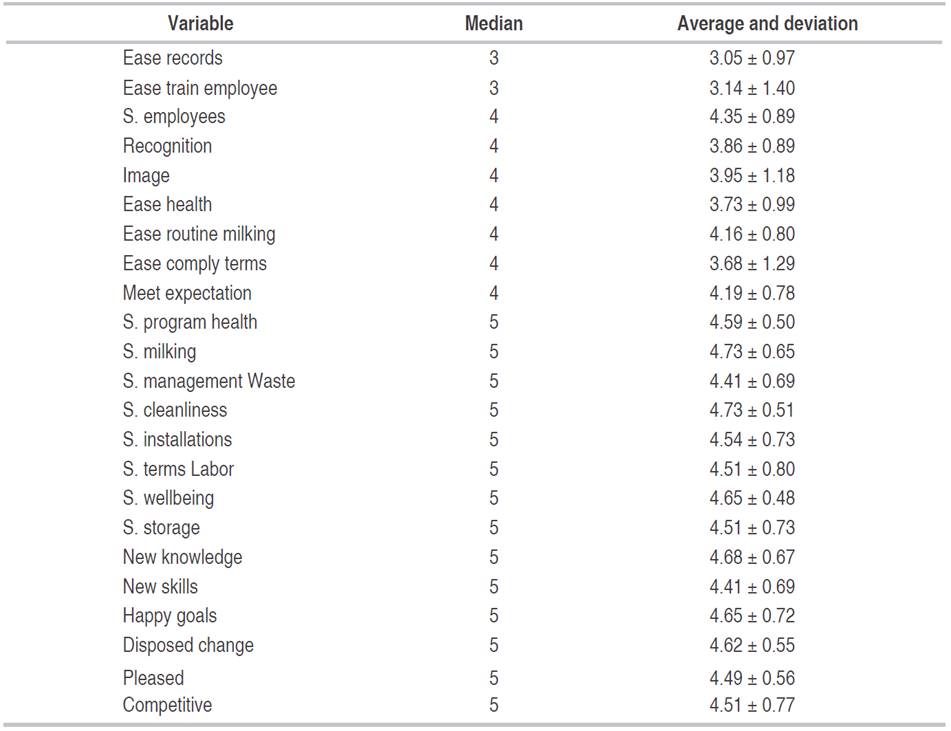
A pilot test was applied to five certified producers in order to validate the questionnaire. It evaluated time invested, pertinence of the language, clarity of the questions and extension of the questionnaire.
Once validated, the questionnaire was applied to 37 GMP-certified producers by sampling at the region convenience. Their participation was voluntary and confidential. The Cronbach test (1951) was applied to each dimension to measure reliability of the measuring scales using sjstats (Lüdecke, 2016) in R-project software (R Core Time, 2016), and the criterion was that it exceeded 0.70.
For the statistical analysis, the relationships between variables generated for measuring general satisfaction were evaluated with a model of structural equations by means of exploratory factor analysis using psych package (Revelle, 2016) in R, choosing those variables that explained more than 65% of the factors.
Once variables with the greatest weight to explain producer satisfaction were obtained, a confirmatory factor analysis was performed including "General satisfaction" as exogenous variable using Lavaan package (Rosseel, 2012) in R. Reliability of the comparative goodness of fit (CFI) was verified between 0.95 and 0.98 (Bentler, 1990), and the square root of the residual mean square residual error (RMSEA) was less than 0.1 (Rigdon, 1996).
The "General satisfaction" variable was also analyzed by recursive participation and regression trees of all satisfaction, frequency and opinion variables applying the rpart package (Therneau et al., 2015) in R. The cross validation method (Therneau et al., 2015) was used to certify the recursive participation models identifying the optimal complexity parameter (PC) in the pruning of each decision tree.
RESULTS AND DISCUSSION
More than 80% of farmers were older than 30 years of age, implying a high level of maturity, reflected in the decision making that affect farming processes. Regarding schooling, 10 producers earned undergraduate and graduate degrees. According to Nahuelhual et al. (2009), the adoption of good practices in milk production has a positive relationship with age and level of education. The producers were all dairy farms owners, with 27 of them also performing farm management functions, implying that their decisions are motivated on productivity and personal interest.
Regarding the first group of variables, producers pointed out that GMP certification allowed them to develop new skills and acquire new knowledge (Table 1). They emphasized that they were happy to reach the proposed goals, which indicates a sense of belonging. According to Maslow’s theory (1943), this implies satisfaction of self-realization needs located at the apex of the pyramid explaining hierarchy of needs.
Interestingly, producers feel their image before milk-buying companies and fellow producers improve for applying GMP. According to Nahuelhual et al. (2009), the probability of adopting GMP has a positive relationship with the image of the producer.
Producers were satisfied with the changes generated in the farm, both in administration and management practices, resulting from the application of GMP (Table 1). According to Bewley et al. (2001), as dairy farmers perceived productive and managerial improvements resulting from applying technology, they felt more satisfied with their daily work and personal life, which was favored by time savings.
Table 1 shows the evaluation of the certification process regarding the ease of complying with the requirements of the standard, highlighting record management and training of employees as the most difficult aspects to comply. The other variables were easy to comply. Emphasis should be placed on the importance of observation and data collection to conduct productive and management analyzes based on real information that allows sound decision-making (Cerón-Muñoz et al., 2014).
The producers have the intention of getting recertified in GMP. The 97% of the owners considered that the satisfaction generated by farm changes achieved through GMP must be preserved and also that the recertification would allow them to abide by the norm while getting the benefits it offers.
The exploratory factor analysis produced three factors. Of these, two factors were chosen in which the 23 variables in analysis explained more than 65% of the factor. The variables "Satisfaction with the changes in the working conditions (S.TermsLabor)" and "Satisfaction with the changes in the relations with employees (S.Employees)" created the factor "Satisfied". The variables representing the ease of generating training programs for employees ("EaseTrainEmployee"), the ease of fulfilling the conditions required to be certified (EaseComplyTerms") and the ease of creating and implementing health programs (EaseHealth) contributed to the formation of factor "Ease".
Figure 1 represents the proposed structural equations. The "General satisfaction" is an exogenous variable because it was not altered by any of the variables in the dendogram. It can be noticed how satisfaction with GMP certification was explained by the presence of two constructs or latent variables (within circles): Satisfaction with changes ("Satisfied") and ease to obtain the GMP certificate ("Ease").
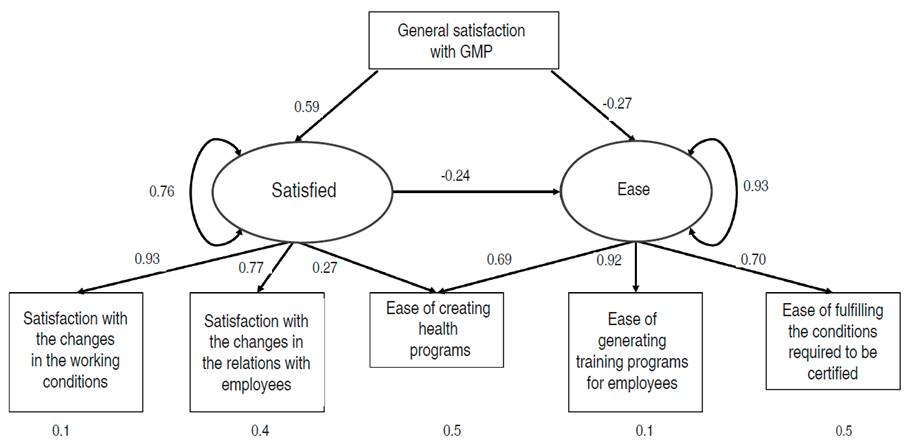
Figure 1 Model of structural equations explaining satisfaction of milk producers certified in good management.
The "Satisfied" construct reflected two variables observed during data collection: the satisfaction of the producer with the changes in the working conditions of his employees (denoted as "S.TermsLabor"), and producer satisfaction with the changes in the relationship with employees after GMP certification (denoted as "S.Employees"). Importantly, both impact the construct with a factorial load higher than 0.70 and the error of these estimates is low (0.1 and 0.4, respectively). In other words, "satisfaction with changes in working conditions" and "satisfaction with changes in the relationships with employees" were the two aspects that satisfied GMP-certified producers.
The latent variable "Ease" is a reflection of three variables: The ability to train employees in the implementation of GMP ("EaseTrainEmployee"), the ease of fulfilling the conditions required by the GMP program ("EaseComplyTerms"), and the ease of creating and complying with the health programs required by the GMP model ("EaseHealth").
The ease to train workers in the implementation of GMP is the variable that most contributed to the creation of the construct "Ease", with a factorial load of 0.92. The ease to meet the requirements of the program has an acceptable factor load of 0.70, and the error is not high enough to reject its impact on the latent variable (0.5). The ease to create and comply with the health program has a low factor load (0.69) for the creation of the construct, implying that this is the least important of the three variables that make up this factor or construct.
Satisfaction with the adoption of GMP among milk producers in northern Antioquia is mostly explained by relationships with employees, such as: improvement of working conditions, the ease of generating and accessing training programs for employees, and the satisfaction produced by the relationships established with them. For the producer, these three variables imply improvement of his image, fulfillment of the needs of acceptance, and fulfillment of the needs of self-realization (Maslow, 1943), since by guaranteeing his employees proper working conditions he improves his image before them and other producers. Improving relationships allows the producer to be more accepted by the stakeholders related to the farm and allows him to value his work.
The ease to comply with the requirements of the GMP program is a decisive factor when choosing to certify. A producer will feel satisfied of been certified if he feels it is easy to meet GMP conditions and to create and implement health programs. This is consistent with results by Radder and Bhanj (2011), who found that while a good payment per liter of milk produced under a clean production model is important, it is not the decisive factor for applying GMP.
According to our results, a producer is more likely to adopt GMP if the institution in charge of developing the program offers guidelines for the application and implementation of such models and the requirements are easy to adopt and apply. This is consistent with Nahuelhual et al. (2009) who state that application of GMP does not respond to economic motivations.
The adjustment statistics for the structural model were 0.96 CFI (which is within the ideal value; Bentler, 1990) and 0.094 RMSEA (less than 0.1, suggested as the maximum admissible value). Although this value is acceptable for evaluating the fit of the model, it should be taken into account that 37 surveys were applied and this parameter decreases as the sample space increases (Rigdon, 1996) (Figura 1).
The recursive participation analysis allowed identifying that satisfaction with working conditions changes after certification and the ease of generating and accessing training programs for employees determine overall satisfaction. Satisfaction with the GMP certification program required that the producer scored his level of satisfaction with the changes in working conditions of his employees above 4.5 and valued the ease to train them above 2.5 (Figure 2).
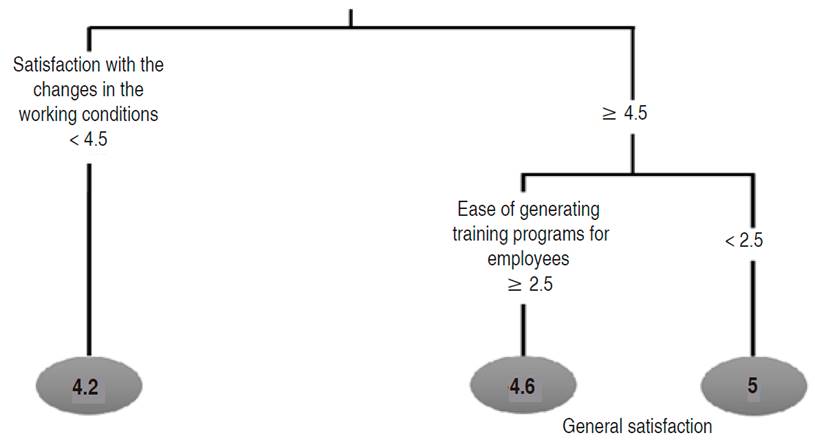
Figure 2 Criteria to determine general satisfaction in milk producers certified in good management practices in northern Antioquia.
Differences were found between municipalities when this variable was included in the analysis. Score less than 4.5 for "Satisfaction with changes in working conditions" was associated with Bello, Don Matías and Santa Rosa de Osos municipalities. Producers that showed greater satisfaction with the changes (greater than 4.5) -and thus greater general satisfaction- were associated with Belmira, Entrerríos, San José de la Montaña, San Pedro de los Milagros and Yarumal municipalities (Figure 3).
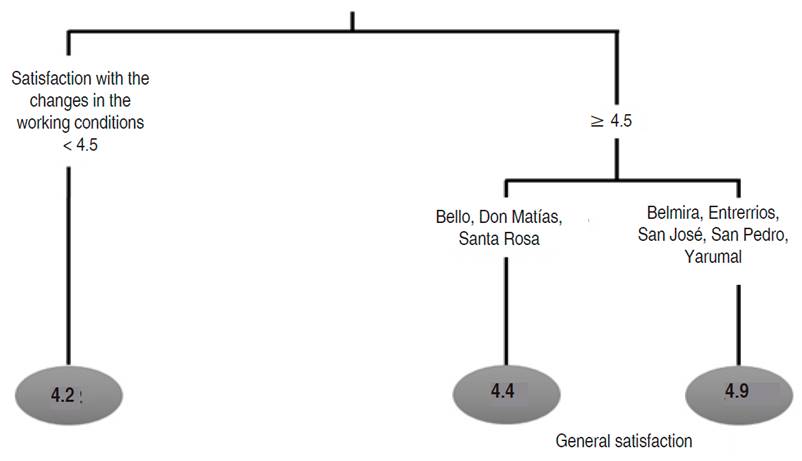
Figure 3 Overall satisfaction among milk producers certified in good management practices in northern Antioquia, discriminated by municipalities.
The CP (0.26) was used to prune the decision tree with the cross-validation method (Therneau et al., 2015), resulting in a greater impact of variable "Satisfaction with changes in the working conditions of employees" on the overall satisfaction of producers (Figure 4).
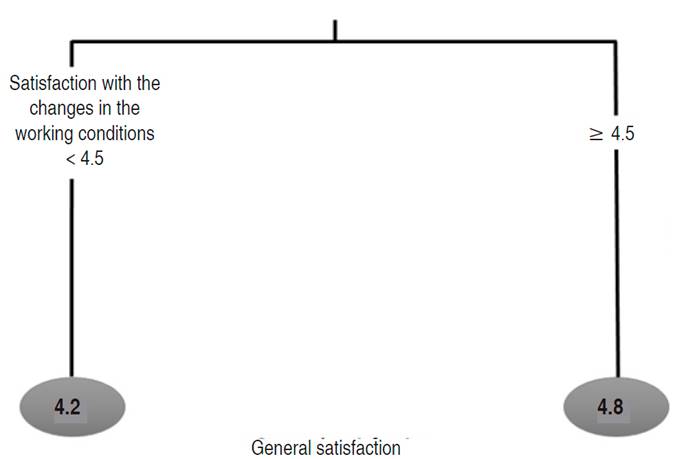
Figure 4 Satisfaction with changes in the working conditions of employees and its impact on the general satisfaction of milk producers certified in good management practices in northern Antioquia.
The cross-validation CP of this model was 0.26, similar to the previous model. Thus, pruning was done on the first level of the tree, resulting -again- that satisfaction with changes in the working conditions of employees influenced more the general satisfaction of certified producers (Figure 4).
Some producers noted that potential bottlenecks to GMP certification are shortage of the ICA staff responsible for auditing the farms and differences in criteria between farm technical advisors and the ICA staff.














